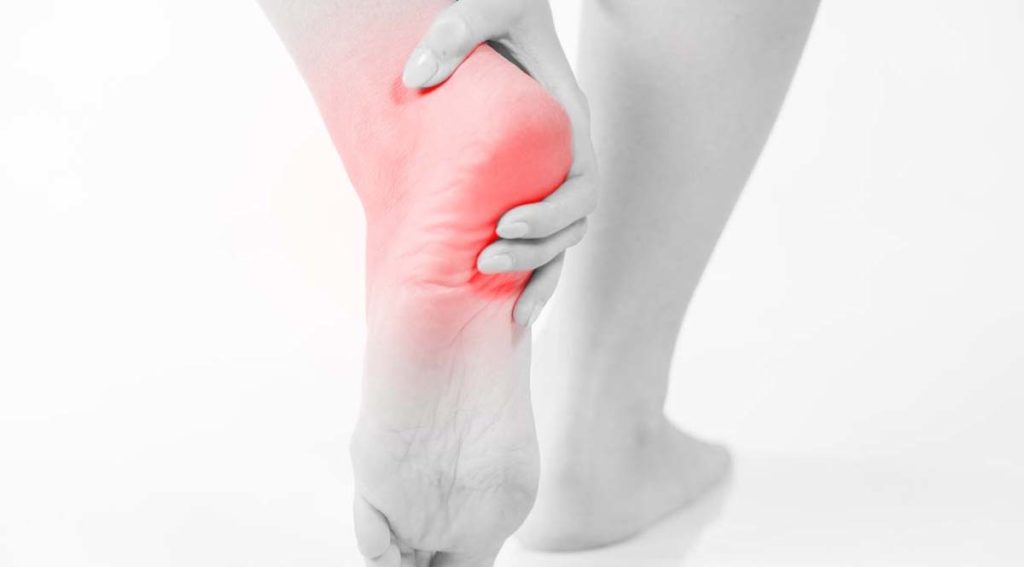Biological, psychological and social aspects of heel pain
If you are experiencing plantar heel pain, it is important to understand why you have pain.
Firstly, it is important to be assessed by a health professional who can provide you with a diagnosis and rule out any serious conditions that might be causing pain. If serious causes of heel pain have been ruled out, then you are ready to treat your heel pain.
Where is my pain coming from?
Pain does not arise from the heel. Pain is only produced by the brain and felt beneath the heel.
The brain is constantly receiving information about the state of the heel. The brain will produce pain, that is felt beneath the heel, if there is credible evidence that the heel is at risk of damage and needs protecting. The brain will also determine what level of pain will be best to protect someone at any given time. Pain helps to alert the individual to change their behaviour (e.g. rest, modify activity, change shoes, see the GP or physiotherapist etc) in order to provide protection.
What factors might influence my pain?
It was once thought that pain beneath the heel was directly related to the amount of tissue damage. We now know that the amount of pain an individual experiences does not necessarily relate to the amount of tissue damage they have sustained. Rather, the severity of pain reflects changes to the tissue damage but is also influenced by psychological factors such thoughts, beliefs, feelings, emotions and behaviours.
Our research has found that:
- Symptoms of depression, anxiety and stress are higher in people with plantar heel pain compared to people without plantar heel pain.
- Catastrophising, which involves irrational thoughts where we believe something is far worse than it actually is, has been found to associated with heel pain and a decreased ability to undertake daily activities.
- A fear of movement due to pain is also associated with a decreased ability to undertake daily activities.
Overall, pain felt beneath the heel is produced by the brain, when the brain believes an individual might be in danger of doing damage. The amount of pain experienced is a combination of many factors including biological (i.e. the state of the tissues beneath the heel); psychological (e.g. your thoughts, beliefs, feelings, emotions and behaviours) and social factors (i.e. socioeconomic status, cultural factors, workplace stressors).
Therefore, pain can actually be turned up and down by things that have nothing to do with the painful body part! For more information about how to treat plantar heel pain, including psychological factors go to “How do I treat heel pain“.
Links to research
- Cotchett M, Lennecke A, Medica V, Whittaker G, Bonanno DR. The association between pain catastrophising and kinesiophobia with pain and function in people with plantar heel pain. The Foot 2017;32:8-14.
- Cotchett M, Munteanu SE, Landorf KB. Depression, Anxiety, and Stress in People With and Without Plantar Heel Pain. Foot and Ankle International. 2016;37:816-821.
- Cotchett M, Whittaker G, Erbas B. Psychological variables associated with foot function and foot pain in patients with plantar heel pain. Clinical Rheumatology. 2015;34:957-964.
Further resources
Prof. Lorimer Moseley, David Moen (a physiotherapist) and Sam Chisholm (a professional communicator) have created a freely accessible online resource to educate people about persistent pain. The website has some useful resources that describe factors associated with pain including a short video called ‘tame the beast’
